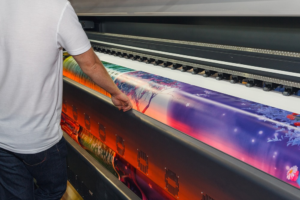The fashion industry globally is valued at nearly $3 trillion dollars, with an estimated 1 in 6 people working in a job directly or indirectly related to fashion. The industry is expansive and given its size and breadth, it contributes significantly to the climate and has a growing impact on the socio-economic structure of the society. But the industry also poses a lot of opportunities. The environmental impact of the industry is well known. Estimates of up to 8% of the world’s greenhouse gas emissions (GHGs) are attributed to fashion with ~70% attributable.
Given the impact of the industry on the environment it is time to look for the right ways to balance the ill-effects of the actions that the fashion industry has been following for years now. Let’s look at the ESG initiatives here to look more closely at the changing face of the industry.
What is ESG?
ESG is a strategy-led action plan that helps a company accomplish governance mechanism and its competence to effectively manage its environmental and social impacts. In other words, it stands for environmental social governance and is crucial to a brand’s existence within the fashion landscape.
What are some of the available standards?
A list of Numerous companies and boards function today to study the prospect of ESG for the fashion industry and see how much progress they have done. These industry bodies look to standardise practices and make it more effective. Institutions, such as the Sustainability Accounting Standards Board (SASB), the Global Reporting Initiative (GRI), Task Force on Climate-related Financial Disclosures (TCFD), the United Nations Principles for Responsible Investment, and the United Nations Sustainable Development Goals, are some of these popular names working to form standards and define materiality to facilitate the amalgamation of these factors into the investment process. Ratings have also boomed over the last decade. Morgan Stanley Capital International (MSCI) and specialist firms such as Sustainalytics have been joined by traditional credit rating agencies such as Moody’s Analytics and S&P Global. The influence of these frameworks and rating agencies is such that they may shape regulations to come.
Looking at the worries
The textiles and apparel industry are accountable for many environmentally harmful practices as well as emissions contributing to climate change. Textile and apparel sales have more than doubled globally in the past 20 years. This results in an immense amount of textile waste, i.e., up to 85 per cent of textiles go into landfills each year.
Moreover, fashion production also incurs lots of environmental worries. For instance, cotton is an enormously water-intensive material. The production of one cotton T-shirt requires 2,700 litres of water, which is equal to the amount one person would drink in 2.5 years. Cotton farming requires more pesticides and fertilisers than any other single crop. On average, a farmer uses around 360 pounds of fertilisers per acre of the cotton field every year. Most of these nitrates are then transformed into nitrous oxide, a greenhouse gas 300 times more harmful than CO2.
That’s cotton, on the other hand the global consumption of synthetic yarns and fibres increased from a few thousand tonnes in 1940 to more than 60 million tonnes in 2018, and it continues to rise. Synthetic textiles impact the environment and climate throughout their life cycle. In addition, between 200,000 and 500,000 tonnes of microplastics from the textile industry enter the marine environment every year. They are non-biodegradable and can take up to 200 years to break down. Furthermore, washing synthetic textiles (such as polyester, nylon, and acrylic) is a major contributor to microfibers entering the oceans. It is estimated that each year 0.5 million tonnes of plastic microfibers are released into the oceans from the simple act of washing synthetic textiles.
Getting to change things
- Leading fashion brands have answered this call and are working to create synthetic fibre alternatives and develop more eco-friendly manufacturing and dyeing processes. Technology and research are playing a key role in making the industry more sustainable.
- Today a list of sports shoes and apparel are getting manufactured from materials obtained from plastic dumped into the ocean.
- Fish skins and natural dyes are being used in place of harmful chemicals.
- Backpacks and purses are being made from the discarded canvas, and furs are being substituted by fruit skin.
- Some companies have also implemented a return policy so they can recycle the consumers’ clothing after they have worn out.


